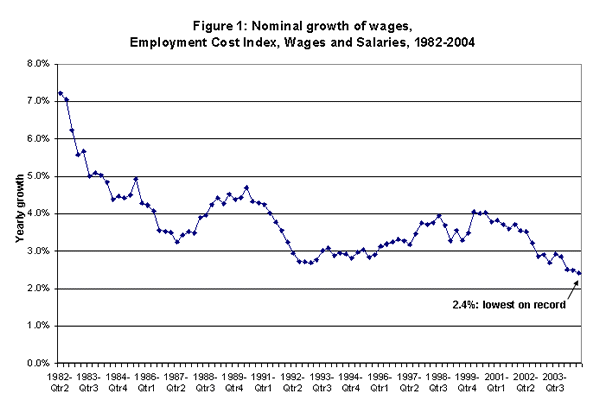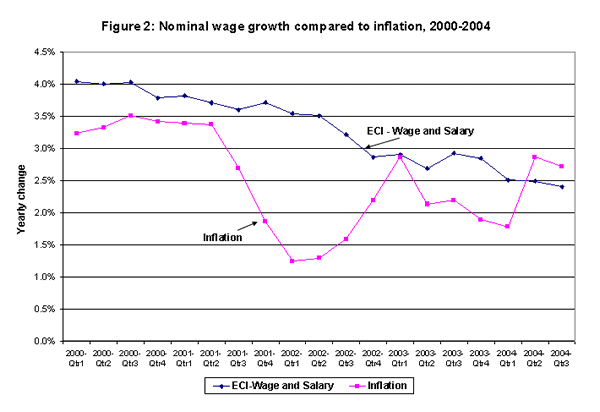See Snapshots Archive.
Snapshot for October 29, 2004.
Wage growth continues to slow; falls behind inflation
The average pay of working Americans grew at the slowest rate on record in the third quarter of the year, according to today’s Employment Cost Index (ECI) report from the Bureau of Labor Statistics. This series, which begins in 1982, shows that the wage and salary component of the index grew 2.4% between the third quarter of 2003 and the fourth quarter of 2004. This change is the slowest growth rate on record, and below the 2.7% rate of inflation for this period.
Figure 1 shows nominal yearly growth in the wages and salaries paid by employers over the full series beginning in the early 1980s. After generally climbing since the mid-1990s, wage growth began to slow in 2001, and that trend has continued since. In 2000, the average growth rate was 4.0%; thus far this year, it has been 2.5%, a marked deceleration.

Figure 2 focuses on the growth slowdown that has occurred since 2000, and adds the yearly growth of inflation. For the past two quarters, the growth of wages has fallen behind that of inflation, reducing the real buying power of the average paycheck. The last time ECI wages fell behind inflation for consecutive quarters was in the first half of 1993.

Clearly, the persistently slack job market is leading to slower wage growth. Although the economy is growing apace—gross domestic product was reported today to be up 3.7% over this last quarter—and the economy has been adding jobs for a year now, average wages are now falling behind inflation. While higher energy costs account for the faster growth of prices, half of the slowdown in real wages is due to the slower nominal growth induced by the weak job market.
While jobs are coming back, employment is not growing nearly fast enough to absorb the job-market slack remaining from the recession and jobless recovery. Add to this the fact that the higher energy costs drove inflation up over this period, and the result is an economy that is expanding while real wage growth contracts.
The recovery is no longer jobless, but it is beginning to look “wage-less.”
This Snapshot was written by EPI senior economist Jared Bernstein with research assistance from Yulia Fungard.
